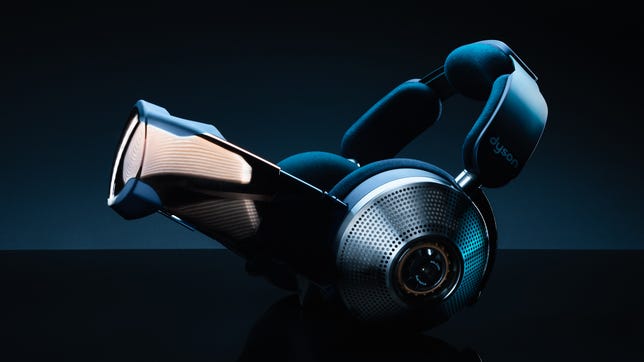Technologies
Dyson Zone Review: The Weirdest Headphones We’ve Ever Tested
With their air-purifying face visor, the Dyson Zone headphones are certainly unusual. We put them to the test.
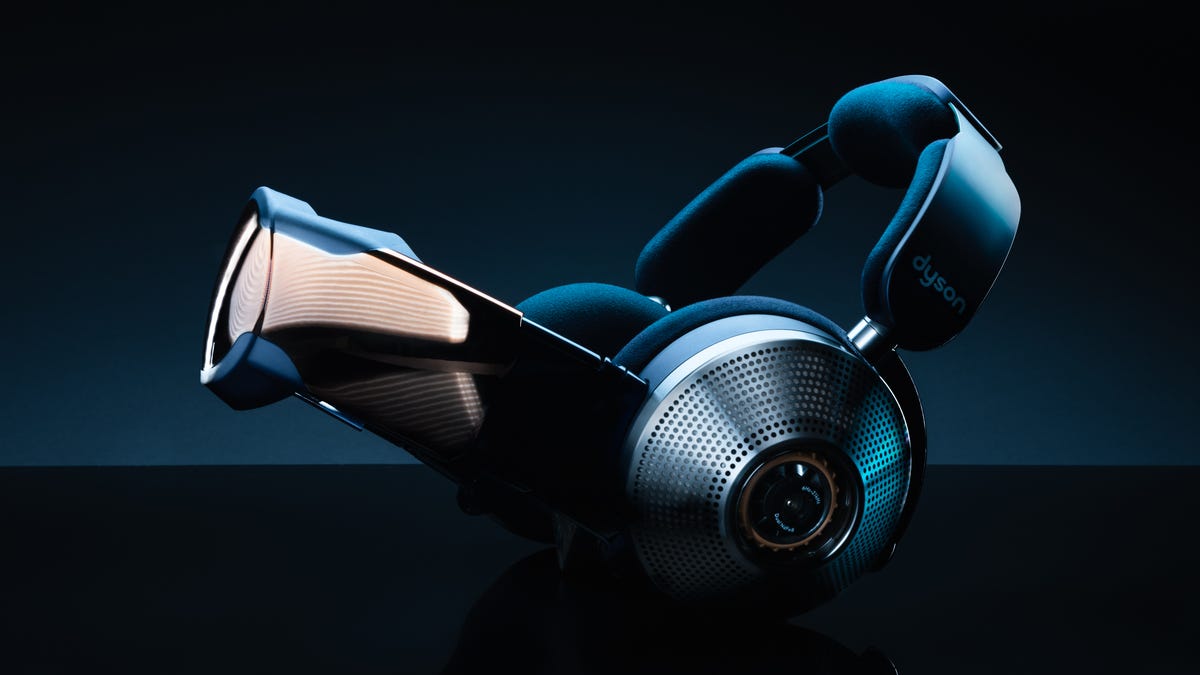
The Dyson Zone headphones have great sound, excellent noise canceling and its visor can filter out pollution to help you breathe easy. But at almost $1,000 they’re a tough sell, especially for anyone who doesn’t live or work in a place where airborne pollution is an issue, like a major city. A lot of headphone users simply won’t benefit from the air filtration system at the core of the Zone.
Having spent some time with my review model, I’m impressed with the audio quality and noise canceling, but their significant weight, bizarre appearance and limited appeal makes them tricky to recommend, at least to most people. Those of you with deep pockets and who walk or cycle through New York’s busy streets may well see the value in these unusual headphones. Everyone else will be better served by more traditional noise-canceling headphones.
Dyson’s Zone headphones go on sale globally towards the end of April and will cost $949 (£749, which is about AU$1,395 converted).
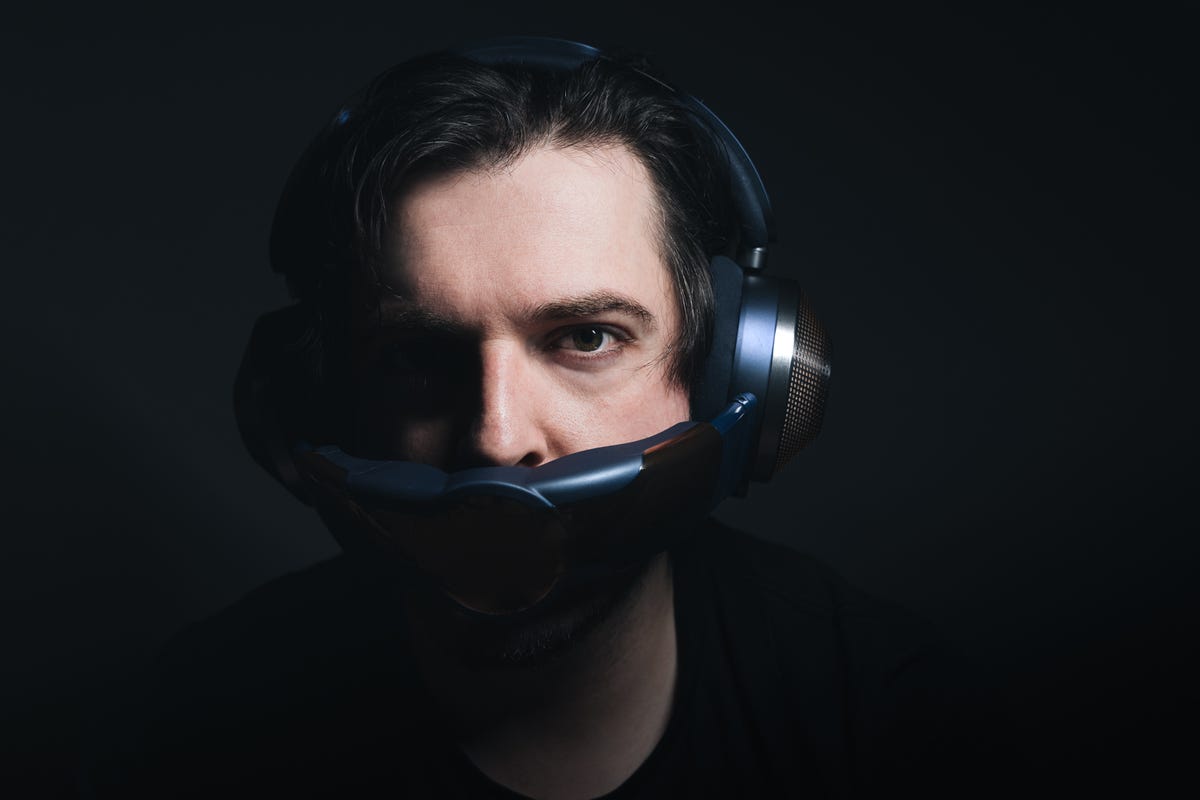

They’re not exactly subtle.
Andrew Lanxon/CNETDyson first showed off the Zone headphones last year and frankly we weren’t sure what to think. They’re huge over-ear headphones with metal grilles and a quirky removable face visor that sends purified air to your mouth and nose using micro compressors and filters inside the earcups. It’s certainly a first of its kind, and Dyson thinks it’s on to something.
Like
- Great sound quality
- Excellent active noise cancellation
- Generous battery life for music
- Air filtration could help reduce breathing problems in big cities
Don’t Like
- High price
- Extremely heavy
- Built-in filtration has limited appeal beyond wealthy urbanites
The Zone is designed for urban use, for those of you walking or cycling through the world’s megacities where breathing ground-level air pollution is a serious problem. Then there’s the pollutants in underground subway systems, which can be worse than at street level. Dyson says its filter system captures 99% of airborne particle pollutants, including nitrogen dioxide, sulfur dioxide and airborne dust, which are especially problematic in cities.
Now, I can’t give a verdict on how well that actually works because funily enough I don’t have my own particle laboratory to test it scientifically. But I did go and see Dyson’s labs in the UK, where it’s spent over six years testing and refining the Zone using medical-grade mechanical lungs on mannequins in rooms full of pollutants to measure how many bad gases actually get inside those lungs. They also test how well it works on different-shaped heads and how effective the system is in different wind conditions.
Wearing the visor feels a bit weird, but it’s not uncomfortable. It snaps on magnetically to the headphone cups and sits a little in front of your face to blow a stream of cooling air around your mouth and nostrils. It feels nice.
The airflow is powered by the smallest motors Dyson has ever made — one motor in each earcup — but having them so close to your ears is a bit like having two hair dryers strapped to your head. The canceling helps reduce that noise, but you can still hear it, especially if you’re listening to gentle music or podcasts. I listen to a lot of metal from bands like Periphery and that certainly drowned out the motors when I cranked the volume up.
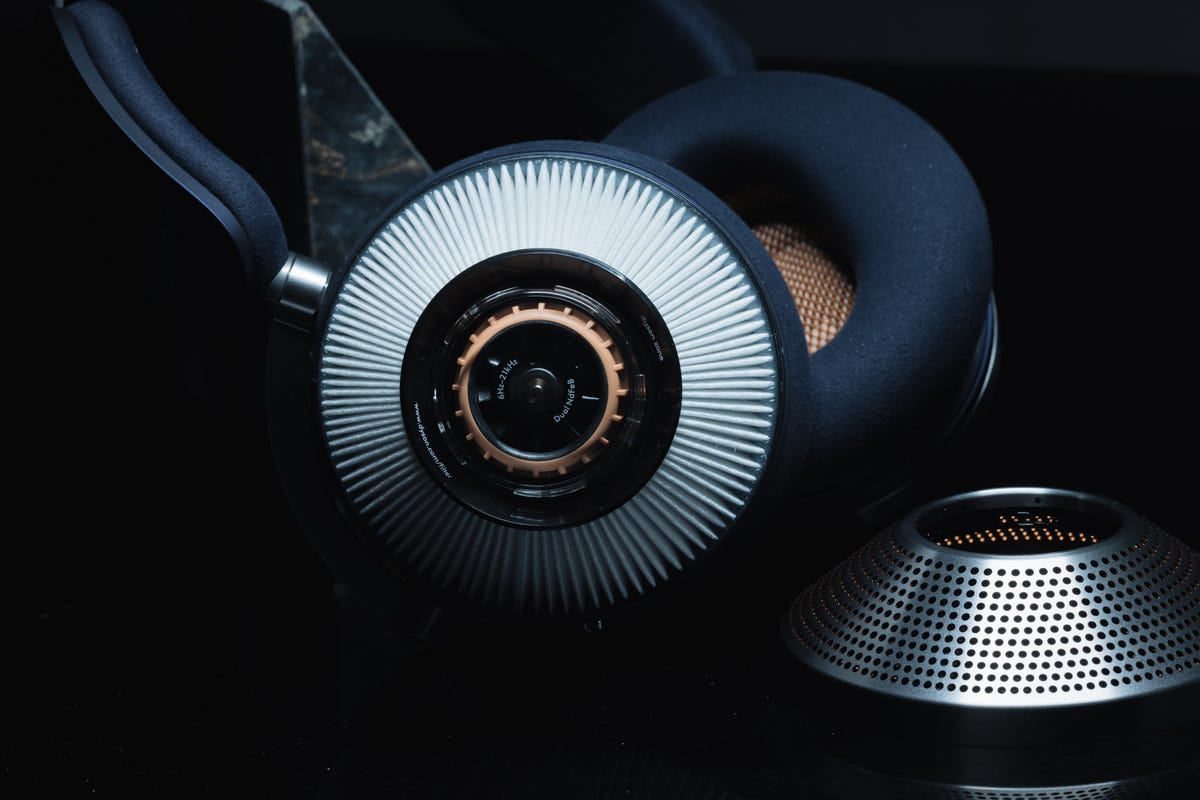

The air filters sit beneath the metal grilles. They’re easy to replace and each set should last a year.
Andrew Lanxon/CNETThe bigger issue for me, though, is that I personally just feel a bit silly wearing the visor out and about. I feel conspicuous, and it certainly attracted plenty of odd looks while I tested it. That said, I live in Edinburgh, a relatively clean city that isn’t the target for the Zone, so there’s little need to wear them here. I may feel differently on the streets of Paris or Beijing.
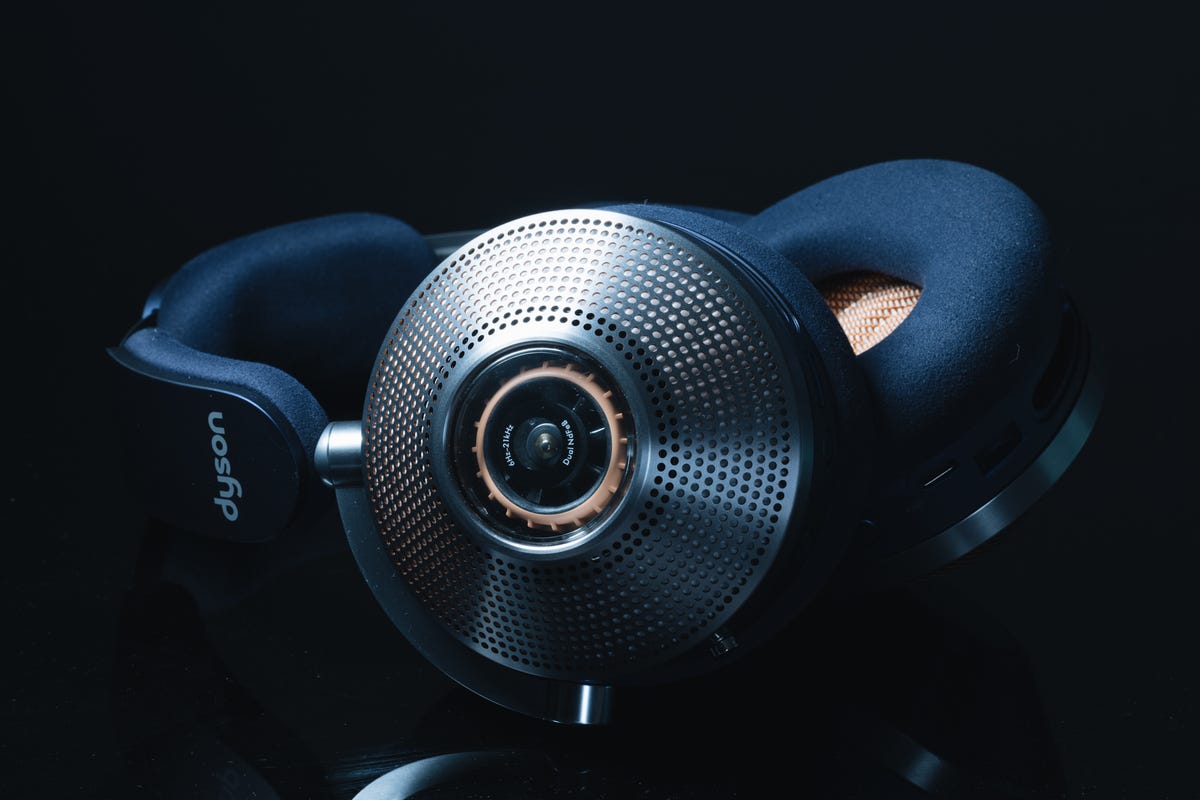

I like the overall look.
Andrew Lanxon/CNETBut it’s new and anything new often looks a bit odd at first. Face masks weren’t common on Western streets until the pandemic hit and now they’re perfectly normal to see out and about, so maybe this type of technology is something we’ll eventually get used to seeing. And Dyson does have a good track record of its unusual products going mainstream, with its bladeless fans and hand dryers being commonplace now, and its Air Wrap hair styler dominating TikTok beauty feeds the world over.
The filters are easy to access beneath the metal grilles of the earcups and Dyson says each set should last around a year before you need to replace them. The Dyson app tells you when they need replacing, while also giving information about the air quality in your area.


The Dyson app shows air quality in your area.
Andrew Lanxon/CNETPull the face mask off and they just become a standard pair of headphones — albeit big ones. Thanks to those motors, they weigh in at nearly 600 grams (21 ounces), making them extremely heavy. Significantly heavier than Apple’s AirPods Max, which we criticized for being too heavy — and they’re only 390 grams (13.6 ounces). Even so, the earcups are deeply cushioned, which helps make them comfy to wear for a couple of hours at a time. The headband fits securely, making them feel lighter than they are. I never felt they were at risk of slipping off while walking.
I’d be interested in a version where not just the filters and visor are removable, but the whole filtration unit can be disconnected when not needed. It’d make the headphones more comfortable for general use — say, while sitting at your desk for eight hours, or watching a movie at home — when you don’t need to worry about breathing outdoor pollution. It might also allow for models to be sold without the filtration for less money, while still letting you buy the filter system as an optional extra should you decide you need it. I’ll certainly be interested to see what a second-generation Zone looks like.
The active noise canceling is excellent though, with road noise kept to a minimum and the general background hum in cafes and bars removed almost entirely.
They offer a great, balanced tone too, with 40mm drivers providing excellent bass that gives a meaty but controlled kick on EDM tracks that doesn’t overwhelm the rest of the tones. As a result, higher frequencies from acoustic guitars, cymbals or strings sound crystal-clear. Tesseract’s track Hexes was reproduced with rich, warm bass, powerful hits on the kick drum and bright, defined cymbals and vocals.
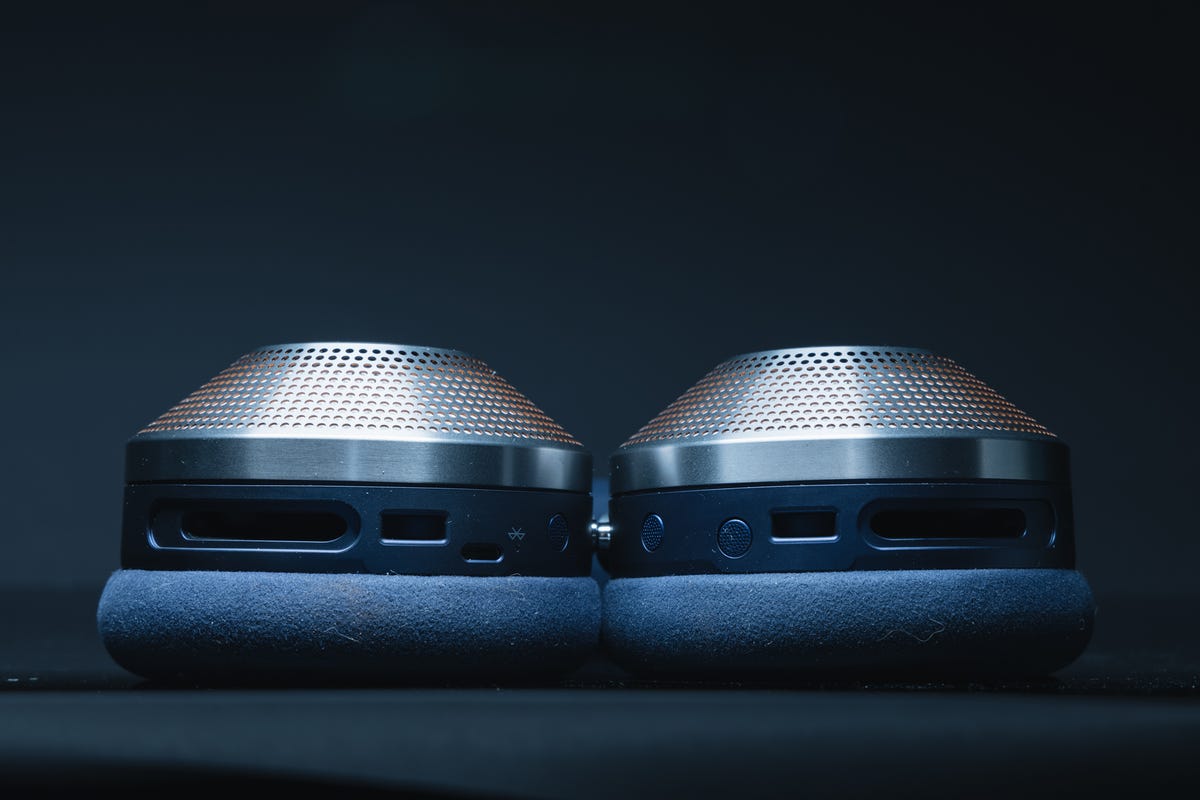

Those are some big headphones.
Andrew Lanxon/CNETMeanwhile, the shimmering high notes of the acoustic guitars and close-miked vocals in Enter Shikari’s acoustic version of Dreamer’s Hotel sounded superb.
Battery life for audio is a generous 50 hours, although that’ll drop to between 90 minutes and four hours with the air filtration on. But that should be enough for your commute into the office, where you can whack them on a charger for your journey home. Dyson says they can withstand being worn in the rain, but there’s no official water resistance rating here. So keep them tucked away during torrential downpours and try not to take them swimming.
There’s no question, then, that the Dyson Zone performs well as a set of headphones, but the fact remains that $949 is a hell of a lot of money and a huge chunk of that cost is for the air filtration system. So you’ll really need to consider how important that is to you in your everyday life. If you commute daily through the heart of polluted megacities walking alongside traffic or experiencing the stale air of a subway for hours every day, it could be a good investment in your long-term health. If you just want a pair of headphones, you can save yourself a bundle and look elsewhere.
Technologies
Today’s NYT Mini Crossword Answers for Wednesday, Dec. 24
Here are the answers for The New York Times Mini Crossword for Dec. 24.

Looking for the most recent Mini Crossword answer? Click here for today’s Mini Crossword hints, as well as our daily answers and hints for The New York Times Wordle, Strands, Connections and Connections: Sports Edition puzzles.
Need some help with today’s Mini Crossword? I’m Irish-American, but yet 6-Down, which involves Ireland, stumped me at first. Read on for all the answers.. And if you could use some hints and guidance for daily solving, check out our Mini Crossword tips.
If you’re looking for today’s Wordle, Connections, Connections: Sports Edition and Strands answers, you can visit CNET’s NYT puzzle hints page.
Read more: Tips and Tricks for Solving The New York Times Mini Crossword
Let’s get to those Mini Crossword clues and answers.
Mini across clues and answers
1A clue: Wordle or Boggle
Answer: GAME
5A clue: Big Newton
Answer: ISAAC
7A clue: Specialized vocabulary
Answer: LINGO
8A clue: «See you in a bit!»
Answer: LATER
9A clue: Tone of many internet comments
Answer: SNARK
Mini down clues and answers
1D clue: Sharks use them to breathe
Answer: GILLS
2D clue: From Singapore or South Korea, say
Answer: ASIAN
3D clue: Large ocean ray
Answer: MANTA
4D clue: ___ beaver
Answer: EAGER
6D clue: Second-largest city in the Republic of Ireland, after Dublin
Answer: CORK
Don’t miss any of our unbiased tech content and lab-based reviews. Add CNET as a preferred Google source.
Technologies
Quadrantids Is a Short but Sweet Meteor Shower Just After New Year’s. How to See It
This meteor shower has one of the most active peaks, but it doesn’t last for very long.

The Quadrantids has the potential to be one of the most active meteor showers of the year, and skygazers won’t have long to wait to see it. The annual shower is predicted to reach maximum intensity on Jan. 3. And with a display that can rival Perseids, Quadrantids could be worth braving the cold to see it.
Don’t miss any of our unbiased tech content and lab-based reviews. Add CNET as a preferred Google source.
The show officially begins on Dec. 28 and lasts until Jan. 12, according to the American Meteor Society. Quadrantids is scheduled to peak on Jan. 2-3, when it may produce upwards of 125 meteors per hour. This matches Perseids and other larger meteor showers on a per-hour rate, but Quadrantids also has one of the shortest peaks at just 6 hours, so it rarely produces as many meteors overall as the other big ones.
The meteor shower comes to Earth courtesy of the 2003 EH1 asteroid, which is notable because most meteor showers are fed from comets, not asteroids. Per NASA, 2003 EH1 is a near-Earth asteroid that orbits the sun once every five and a half years. Science posits that 2003 EH1 was a comet in a past life, but too many trips around the sun stripped it of its ice, leaving only its rocky core. The Earth runs through EH1’s orbital debris every January, which results in the Quadrantids meteor shower.
How and where to see Quadrantids
Quadrantids is named for the constellation where its meteors appear to originate, a point known as the radiant. This presents another oddity, as the shower originates from the constellation Quadrans Muralis. This constellation ceased to be recognized as an official constellation in the 1920s and isn’t available on most publicly accessible sky maps.
For the modern skygazer, you’ll instead need to find the Bootes and Draco constellations, both of which contain stars that were once a part of the Quadrans Muralis. Draco will be easier to find after sunset on the evening of Jan. 2, and will be just above the horizon in the northern sky. Bootes orbits around Draco, but will remain under the horizon until just after 1 a.m. local time in the northeastern sky. From that point forward, both will sit in the northeastern part of the sky until sunrise. You’ll want to point your chair in that direction and stay there to see meteors.
As the American Meteor Society notes, Quadrantids has a short but active peak, lasting around 6 hours. The peak is expected to start around 4 p.m. ET and last well into the evening. NASA predicts the meteor shower to start one day later on Jan. 3-4, so if you don’t see any on the evening of Jan. 2, try again on Jan. 3.
To get the best results, the standard space viewing tips apply. You’ll want to get as far away from the city and suburbs as possible to reduce light pollution. Since it’ll be so cold outside, dress warmly and abstain from alcoholic beverages, as they can affect your body temperature. You won’t need any binoculars or telescopes, and the reduced field of view may actually impact your ability to see meteors.
The bad news is that either way, the Quadrantids meteor shower coincides almost perfectly with January’s Wolf Moon, which also happens to be a supermoon. This will introduce quite a lot of light pollution, which will likely drown out all but the brightest meteors. So, while it may have a peak of over 100 meteors per hour, both NASA and the AMS agree that the more realistic expectation is 10 or so bright meteors per hour.
Technologies
Today’s Wordle Hints, Answer and Help for Dec. 24, #1649
Here are hints and the answer for today’s Wordle for Dec. 24, No. 1,649.
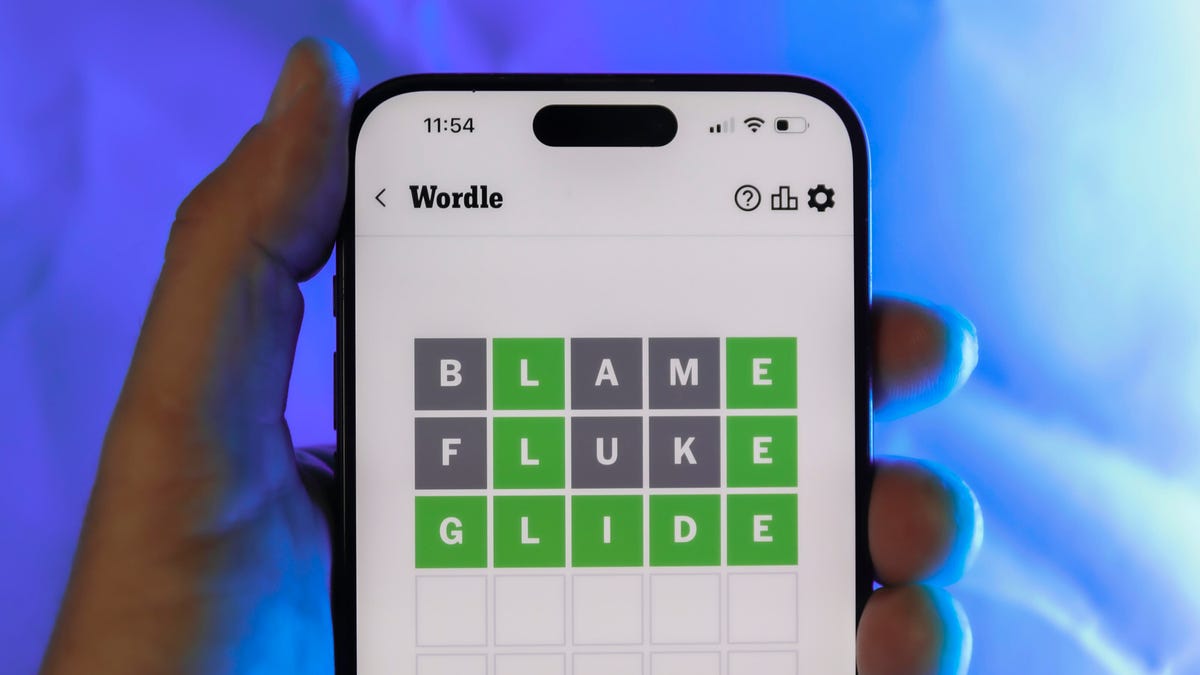
Looking for the most recent Wordle answer? Click here for today’s Wordle hints, as well as our daily answers and hints for The New York Times Mini Crossword, Connections, Connections: Sports Edition and Strands puzzles.
Today’s Wordle puzzle is a little tricky, with a double letter that could confuse players. If you need a new starter word, check out our list of which letters show up the most in English words. If you need hints and the answer, read on.
Read more: New Study Reveals Wordle’s Top 10 Toughest Words of 2025
Today’s Wordle hints
Before we show you today’s Wordle answer, we’ll give you some hints. If you don’t want a spoiler, look away now.
Wordle hint No. 1: Repeats
Today’s Wordle answer has one repeated letter.
Wordle hint No. 2: Vowels
Today’s Wordle answer has one vowel, but it’s the repeated letter, so you’ll see it twice.
Wordle hint No. 3: First letter
Today’s Wordle answer begins with S.
Wordle hint No. 4: Last letter
Today’s Wordle answer ends with L.
Wordle hint No. 5: Meaning
Today’s Wordle answer can refer to a cylindrical device upon which thread is wound.
TODAY’S WORDLE ANSWER
Today’s Wordle answer is SPOOL.
Yesterday’s Wordle answer
Yesterday’s Wordle answer, Dec. 23, No. 1648 was GLINT.
Recent Wordle answers
Dec. 19, No. 1644: MYRRH
Dec. 20, No. 1645: WHITE
Dec. 21, No. 1646: QUILT
Dec. 22, No. 1647: CONCH
Don’t miss any of our unbiased tech content and lab-based reviews. Add CNET as a preferred Google source.
-

 Technologies3 года ago
Technologies3 года agoTech Companies Need to Be Held Accountable for Security, Experts Say
-

 Technologies3 года ago
Technologies3 года agoBest Handheld Game Console in 2023
-

 Technologies3 года ago
Technologies3 года agoTighten Up Your VR Game With the Best Head Straps for Quest 2
-

 Technologies4 года ago
Technologies4 года agoBlack Friday 2021: The best deals on TVs, headphones, kitchenware, and more
-

 Technologies4 года ago
Technologies4 года agoVerum, Wickr and Threema: next generation secured messengers
-

 Technologies4 года ago
Technologies4 года agoGoogle to require vaccinations as Silicon Valley rethinks return-to-office policies
-

 Technologies4 года ago
Technologies4 года agoOlivia Harlan Dekker for Verum Messenger
-

 Technologies4 года ago
Technologies4 года agoiPhone 13 event: How to watch Apple’s big announcement tomorrow

